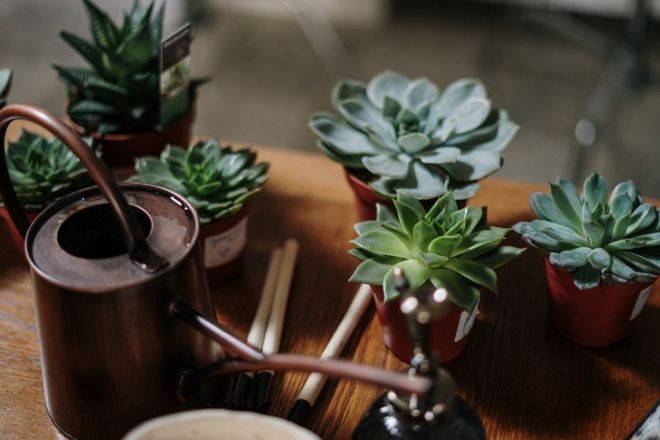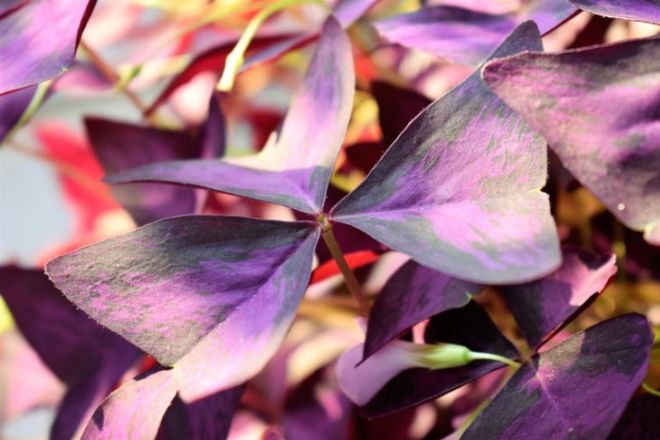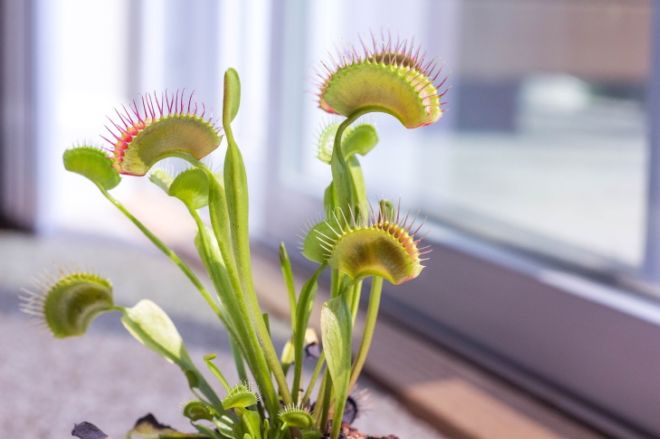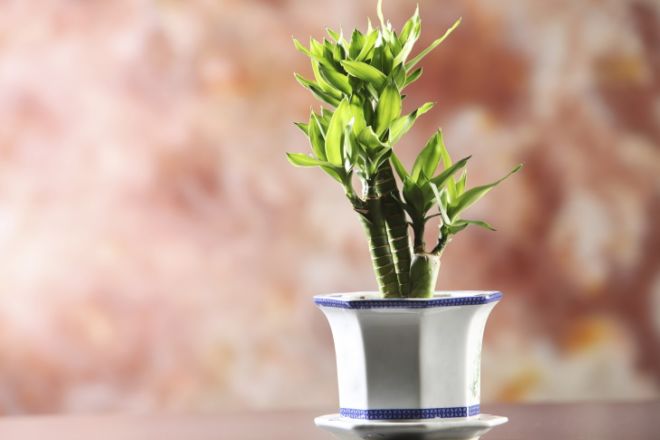6. Succulents

Succulents come in all shapes, from the String of Pearls with its long cascading stems to the pebble-like Lithops, the tree-like Jade Plant, and the pretty rosetta-shaped Echeverias.
What makes these plants a good fit for small apartments, offices, and homes with limited space is their miniature size, slow growth rate, and low maintenance. Watering these plants often is not necessary and even harmful, so wait for the soil to dry out well before watering. While most succulents prefer a lot of light (after all, they naturally grow in desert conditions), some live well in indirect light, too. Examples of low light succulents are the Snake Plant, Jade Plant, Aloe Vera, Ponytail Palm, the ZZ Plant, and Burro’s Tail.
7. Purple Shamrock (Oxalis)

Also known as purple shamrocks, oxalis plants are dainty and very special-looking. The plant consists of three purple leaves on a thin stem, with each leaf folding and unfolding in response to light every day. A small plant, oxalis doesn’t grow taller than 6 inches (15 cm) in a pot, so these delicate plants are an excellent choice for small spaces. The plant prefers to dry out a bit in-between watering and requires indirect light.
8. Venus Fly Trap (Dionaea muscipula)

Here’s yet another example of a multitasking plant – the Venus Fly Trap will decorate your workstation while also catching annoying flies and other insects for you. You’re probably all familiar with Venus Fly Traps, as the carnivorous plant is famous for its ability to snap shut when it detects its prey.
What you may not know about this carnivorous plant is that these plants are usually quite compact, some may even call them really tiny, so they will fit in any space, really. Venus Fly Traps ordinarily grow in swamps, so they require a low-light environment that’s quite damp at all times and not too hot. The plants also perish when exposed to minerals, so use distilled water to keep the soil moist.
9. Pothos (Epipremnum)

Pothos is an extremely widespread houseplant, and one of the main reasons why it’s so common is namely because it grows incredibly fast and is almost impossible to kill. Pothos plants are tolerable to dryness, in fact, they favor drying out between waterings.
It’s time to water your pothos when the leaves start to droop but try not to let the leaves wilt for long, as they may become yellow and fall off. In addition to that, pothos doesn’t require much light and are capable of surviving with little to no sunlight on artificial light alone. If you notice that the leaves of the plant become pale, it means they’ve had too much sun, whereas darker leaves can point to a lack of sunlight.
These trailing plants grow in long vines that can reach the length of 10 ft (3 m) or even more, but worry not, as the plant is very tolerant of trimming. In fact, you can easily take the cuttings, wait for them to root in water, and then replant them in the same planter to create a fuller plant. Keep your cats, other pets, and children from chewing on pothos leaves, though, as they can cause irritation in the mouth, vomiting, and difficulty swallowing.
10. Lucky Bamboo (Dracaena sanderiana)

The last feature on this list is the Lucky Bamboo, a pretty and unique-looking flowering plant from Central Africa that can be grown both in water and in soil. When the conditions are right, these small plants will slowly grow up to 3 feet tall (90 cm), but since the plant grows upwards, they still won’t require much space.
The plant favors bright indirect light. When grown in soil, Lucky Bamboo requires rich, well-drained, and moist soil. If you choose to grow it in water, however, make sure you change the water once a week or so and preferably use filtered water.

